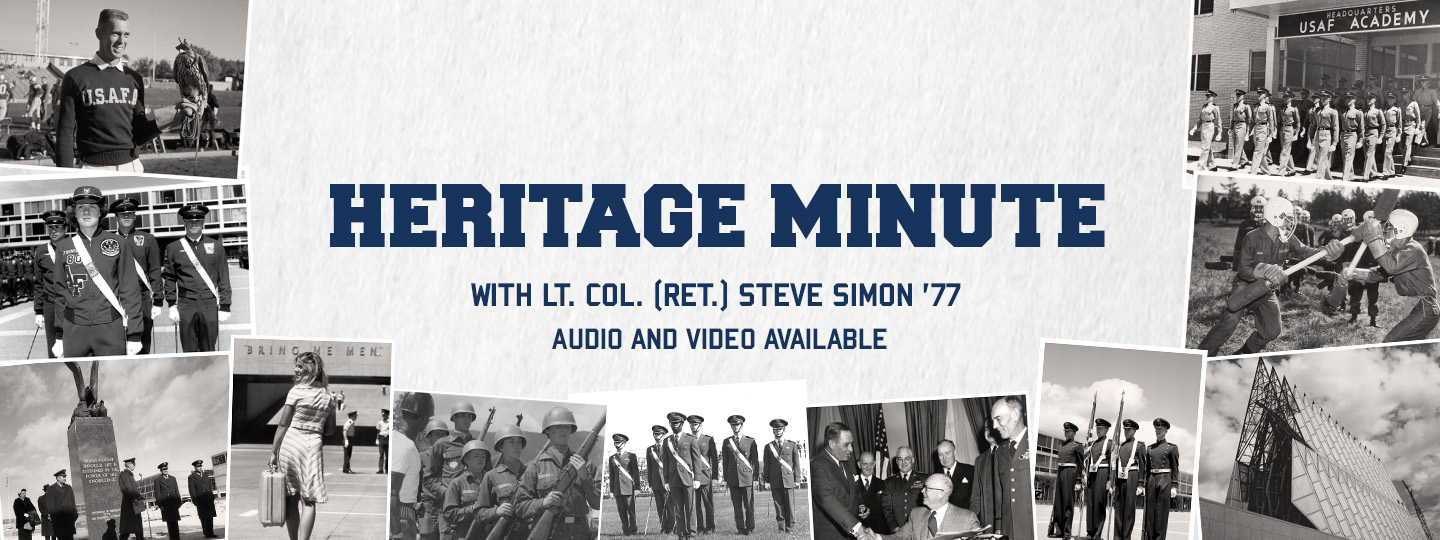Heritage Minute Special:
How the Wings of Blue got its start
It all began in the spring of 1962, when a group of daring cadets — later dubbed the "bootleg jumpers" — made their first parachute jumps. Armed with condemned SERE rigs and supported by local pilots, these cadets took to the skies over Colorado, driven by passion and boldness rather than official approval.
Among them were cadets Aronoff, Davis, Kelley, McCurdy and Sijan. At their own risk and expense, they began performing demonstration and competition jumps, including their first collegiate national appearance in Wisconsin, where they brought home a gold medal. Their actions were entirely unsanctioned — the Academy had no knowledge of their activities.
When word of their exploits finally reached the Superintendent, Academy leadership faced a tough choice: discipline the rogue jumpers or recognize their accomplishments. The early years were turbulent, marked by uncertainty and debate. But in 1964, a challenge from West Point’s commandant to compete in a parachuting meet helped tip the scales. Club status was officially granted in May of that year.
Under the leadership of Cadet Pete Johnston, the club gained prominence, not only within the cadet wing but across the skydiving world. His vision— supported by dedicated volunteers such as Capt. Craig Elliot, Capt. John Garrity, Staff Sgt. Mort Freedman and Master Sgt. James Howell — laid the groundwork for what would become the internationally renowned United States Air Force Academy parachute team: the Wings of Blue.

